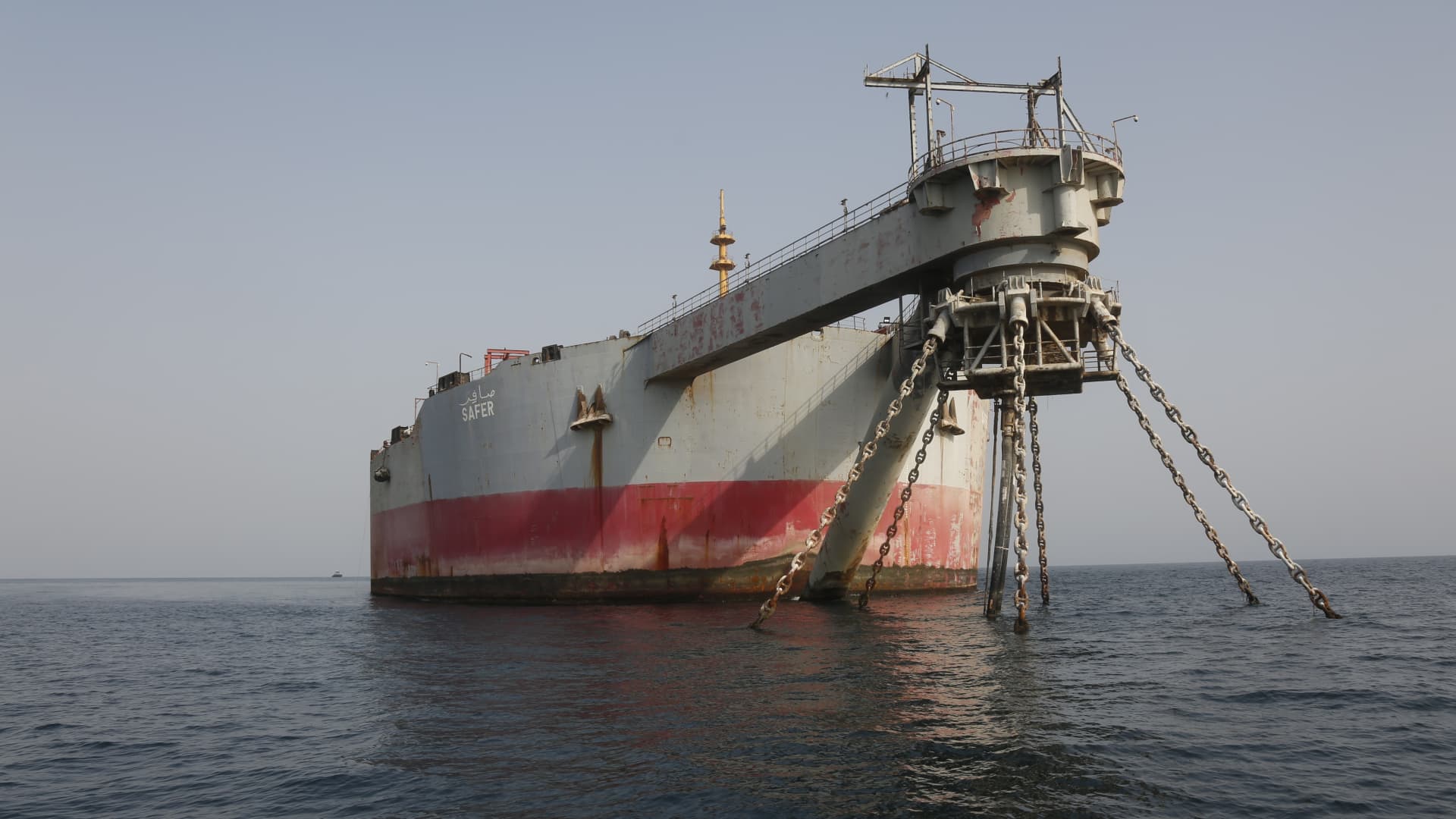The UN has begun a 19-day operation to extract oil from a 47-year-old decaying supertanker as it seeks to end a race against time to avoid a catastrophic oil spill.
The tanker, named Safer, has been stranded off Yemen’s Red Sea coast for over eight years after civil war erupted in the Middle Eastern country. The conflict has prevented the vessel, which contains 1.1 million barrels of oil, from undergoing maintenance since 2015.
This led to growing concerns about a potential oil spill four times the size of 1989’s Exxon Valdez leak, which was the second-largest oil spill in U.S. history.
The UN estimates that a potential spill of tanker Safer’s cargo would result in $20 billion of cleanup costs, have a “severe” environmental impact on water and reefs on Yemen’s coast, and cause disruptions to the Bab al-Mandab strait in the Suez Canal.
It would take 25 years for local fish stock to recover, the UN added.
The oil aboard the tanker began being transferred to a U.N.-owned vessel Yemen, previously known as Nautica, at 10:45 Yemen time Tuesday.
The operation still poses significant risks as it takes place in open waters, and the tanker Safer’s infrastructure is significantly corroded.
“The @UN has begun a complex operation to transfer 1 million barrels of oil from a decaying tanker off the coast of Yemen. We need to keep working to defuse what remains a ticking time bomb & avoid what would be by far the worst oil spill of our era,” U.N. Secretary-General Antonio Guterres said on Tuesday on the X social media platform, previously known as Twitter.
“The transfer of the oil to the Yemen will prevent the worst-case scenario of a catastrophic spill in the Red Sea, but it is not the end of the operation,” said David Gressly, UN resident and humanitarian coordinator for Yemen. “The installation of a CALM buoy to which the replacement vessel will be safely tethered is the next crucial step.”
The U.N. launched its initiative to rescue the oil off the tanker Safer in 2019, but has struggled to gain access to the vessel from Yemen’s Houthi rebel group.
“The neglected FSO Safer supertanker and its 1.1 million barrels of oil cargo has been a ticking time bomb since 2015 threatening a humanitarian, environmental and economic catastrophe, it is only the heroic efforts of a small skeleton crew and a great deal of luck that disaster has not happened,” said Ghiwa Nakat, executive director for Greenpeace MENA, on July 23. “While the salvage operation has its risks, these are less than doing nothing.”
